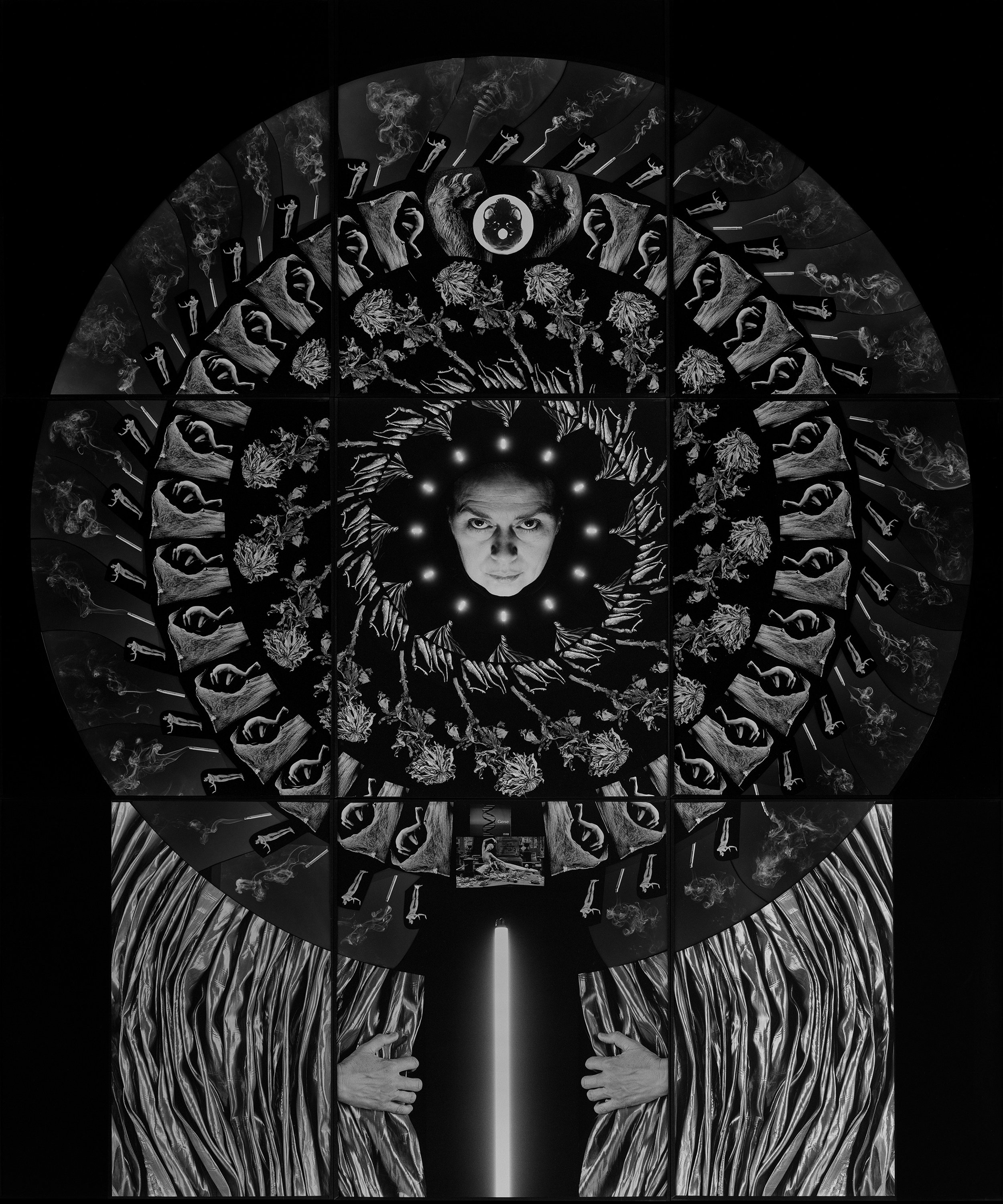Persons Projects | Berlin
12. März - 23. April 2022
Notes from a Seamstress’ Daughter
Zofia Kulik, Anni Leppälä, Ragna Róbertsdóttir, Niina Vatanen
Eine einzigartige Auswahl an Künstlerinnen, deren Schaffen auf einer gemeinsamen Basis beruht: Obwohl ihre Werke nicht unterschiedlicher sein könnten, vereint sie das gemeinsame Schöpfen aus der jeweils eigenen persönlichen Geschichte sowie die Beeinflussung von weiblichen Sichtweisen, die sich entscheidend auf ihr künstlerisches Dasein ausübten.
Vor diesem Hintergrund will die Gruppenausstellung vier verschiedene weibliche Perspektiven untersuchen und zeigen, wie die Künstlerinnen durch den Prozess der Objektivierung der eigenen Ängste und Zweifel miteinander verbunden sind. Ihre künstlerischen Mittel und Werkzeuge reichen dabei von Nadel und Faden bis hin zu textilen Ornamenten und Mustern. Gänzlich unabhängig von den verwendeten Materialien ist dabei die taktile Sensibilität, die sich in den, durch die Ausstellung versammelten Werken zeigt.
Sämtliche Handarbeit wie Stricken und Nähen werden historisch gesehen mit Frauen und ‚häuslichen Aufgaben‘ in Verbindung gebracht, wobei häufig übersehen wird, wie viel Geschick und Kreativität für die Schaffung eines Kunstwerks erforderlich sind. Seit den Anfängen des Surrealismus sind diese Tätigkeiten eines der wenigen Mittel, mit denen die feministische Stimme der Unzufriedenheit charakterisiert wird. Generationen von Künstlerinnen, die die Erwartungen der Gesellschaft negierten und ihnen entkommen wollten, haben das textile Arbeiten bewusst vermieden. Heute greifen zeitgenössische Künstlerinnen diese Traditionen bereitwillig auf und verweisen damit auf die Wiederholung alltäglicher Tätigkeiten als Grundlage unserer Existenz.
Une sélection unique de femmes artistes dont la création repose sur une base commune : Bien que leurs œuvres ne puissent pas être plus différentes les unes des autres, elles sont unies par le fait qu'elles ont toutes puisé dans leur propre histoire personnelle et qu'elles ont été influencées par des points de vue féminins qui ont eu un impact décisif sur leur existence artistique.
Dans ce contexte, l'exposition de groupe vise à explorer quatre perspectives féminines différentes et à montrer comment les artistes sont liées entre elles par le processus d'objectivation de leurs propres peurs et doutes. Leurs moyens et outils artistiques vont de l'aiguille et du fil aux ornements et motifs textiles. La sensibilité tactile qui se manifeste dans les œuvres rassemblées par l'exposition est totalement indépendante des matériaux utilisés.
Tous les travaux manuels, comme le tricot et la couture, sont historiquement associés aux femmes et aux "tâches domestiques", sans que l'on se rende compte de l'habileté et de la créativité nécessaires à la création d'une œuvre d'art. Depuis les débuts du surréalisme, ces activités sont l'un des rares moyens de caractériser la voix féministe du mécontentement. Des générations de femmes artistes, qui niaient les attentes de la société et voulaient y échapper, ont délibérément évité le travail textile. Aujourd'hui, les artistes contemporaines reprennent volontiers ces traditions, soulignant ainsi la répétition des activités quotidiennes comme fondement de notre existence.
Una selezione unica di donne artiste il cui lavoro si basa su un fondamento comune: Anche se le loro opere non potrebbero essere più diverse, sono unite dal loro comune attingere alle loro storie personali così come l'influenza di prospettive femminili che hanno avuto un impatto decisivo sulla loro esistenza artistica.
Su questo sfondo, la mostra collettiva vuole esplorare quattro diverse prospettive femminili e mostrare come le artiste sono collegate attraverso il processo di oggettivazione delle proprie paure e dei propri dubbi. I loro mezzi e strumenti artistici vanno dall'ago e filo agli ornamenti e modelli tessili. Completamente indipendente dai materiali utilizzati è la sensibilità tattile che è evidente nelle opere assemblate attraverso la mostra.
Tutto il lavoro ad ago, come il lavoro a maglia e il cucito, è stato storicamente associato alle donne e ai "compiti domestici", spesso trascurando la quantità di abilità e creatività richieste per creare un'opera d'arte. Fin dagli inizi del surrealismo, queste attività sono state uno dei pochi mezzi con cui si è caratterizzata la voce del malcontento femminista. Generazioni di donne artiste che hanno negato e cercato di sfuggire alle aspettative della società hanno consapevolmente evitato il lavoro tessile. Oggi, le artiste contemporanee riprendono prontamente queste tradizioni, indicando la ripetizione delle attività quotidiane come base della nostra esistenza.
A unique selection of female artists who share a common ground within their artistic practices as they all incorporate and draw from their own personal histories. Their work and overall creative development were influenced by a female presence that played a significant role in their upbringing. Under this aspect, this group exhibition intends to explore four different female perspectives and how they are joined together through the process of objectifying their fears and doubts in their search for their own identity. Their artistic arsenal ranges from threads and pins to textile ornaments and patterns. Regardless of the materials used, the works collected in this exhibition reflect a tactile sensibility in the way the artists apply them.
Embroidery, sewing, and working with fabric are historically associated with women and ‘domestic tasks’, overlooking the intense skill and creativity required to create the artwork. But since the early days of Surrealism, these specific activities have been one of the tools used to characterize the feminist voice of discontent. Generations of female artists seeking to negate and escape society's expectations consciously avoided this direction. Today, contemporary women artists are reusing these traditions in their artistic expression, referring to the repetition of daily activities as the basis of our existence.
(Text: Persons Projects, Berlin)

